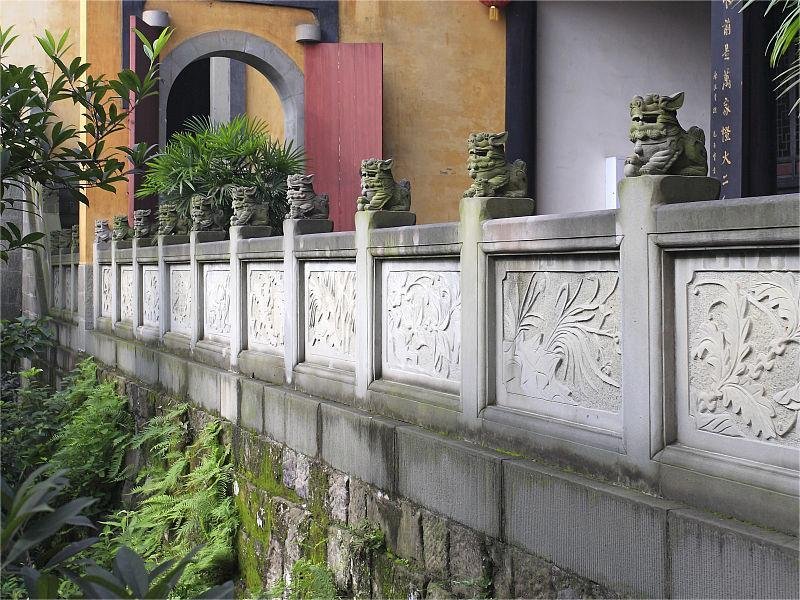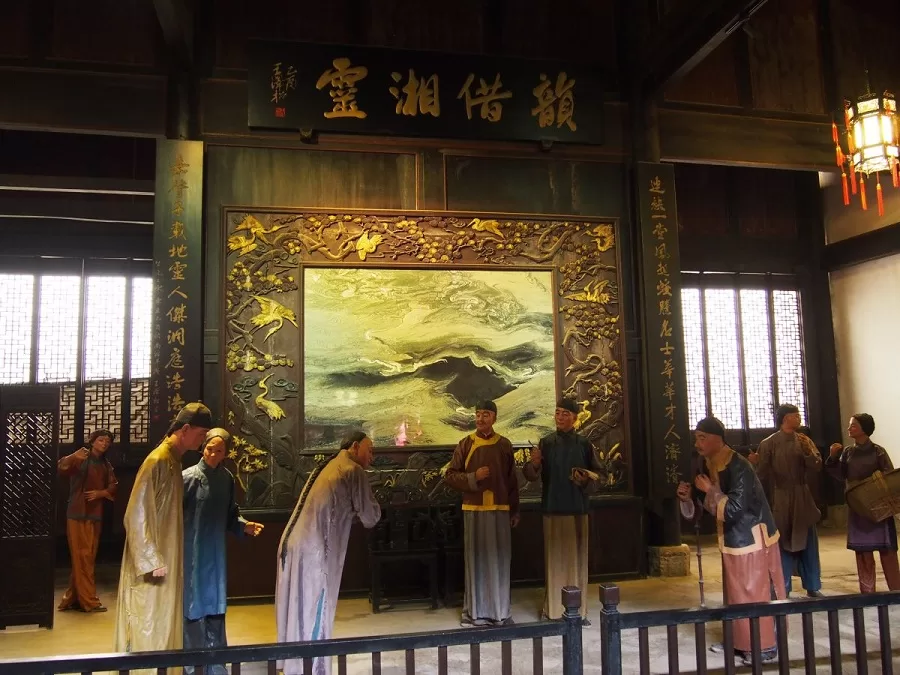Huguang Guild Hall, Chongqing - Prix des billets, heures d'ouverture, emplacement et points forts


Huguang Guild Hall (湖广会馆), also renowned as Huguang Huiguan, is a historic masterpiece nestled in Chongqing, China. This architectural marvel, constructed in 1759, spans an expansive 8,561 square meters. Serving as the epicenter for southern Chinese businessmen hailing from Hubei, Hunan, Guangdong, and Guangxi provinces, it epitomizes the cultural and economic significance of the region.
Throughout the Ming and Qing dynasties, Huguang Guild Hall emerged as a symbol of opulence and communal harmony, reflecting the prosperity of its patrons. Its intricate design, adorned with intricate woodwork, exquisite courtyards, and traditional Chinese architectural elements, showcases the remarkable craftsmanship of its time.
Today, Huguang Guild Hall stands as one of the most substantial and well-preserved ancient guild halls in southern China, preserving the rich heritage of commerce, culture, and camaraderie that once thrived within its walls. It continues to be a testament to the enduring legacy of Chinese history and architecture, attracting visitors from around the world eager to explore its historical significance.
Table des matières
- Informations de base
- Localisation et transport
- Highlights of Huguang Guild Hall
- Video about Huguang Guild Hall
- Conseils utiles résumés à partir d'études
- Attractions near Huguang Guild Hall
Informations de base
| Durée estimée de la visite | 1 - 2 heures |
| Prix du billet | 25 RMB |
| Heures d'ouverture | 9.00 - 18.00 ; Dernière admission : 17.00 |
| Numéro de téléphone | 0086-023-63914697 |
Localisation et transport
Huguang Guild Hall, a cherished historical landmark, is conveniently situated at No. 1, Changping Road, Yuzhong District, Chongqing. This prime location in the heart of Chongqing allows visitors easy access to the rich history and architectural grandeur of this remarkable site. To get there, you can choose the following ways:
Bus : Take bus 440, 480, 553, Tourist Line T001, or Tourist Line T002, and get off at Huguang Huiguan Stop (湖广会馆站)
Métro : The closest metro station to Huguang Guild Hall is Xiaoshizi (小什字) on line 1 and line 6. After getting out of the station from Exit 7, walk about 350 meters to the east to reach the building.
Highlights of Huguang Guild Hall
Artistic Carvings

Huguang Guild Hall boasts a mesmerizing array of artistic carvings, showcasing remarkable craftsmanship on both wood and stone surfaces. These intricate carvings feature iconic figures from Traditional Chinese Opera, including characters from classics like Xixiangji, Xiyouji, and Fengshengbang, adding a theatrical touch to the hall’s ambiance.
Moreover, the guild hall’s carvings are adorned with a plethora of auspicious symbols, including majestic dragons, regal phoenixes, and charming bats, all emblematic of good fortune and prosperity in Chinese culture. Intricately carved flowers and plants further enrich the decor, creating a visual symphony that narrates the hall’s historical and cultural significance, making it a captivating testament to China’s rich artistic heritage.
Chinese Opera Stages

Within the resplendent confines of Huguang Guild Hall, five ancient Chinese opera stages stand as enduring relics of a bygone era. These stages harken back to a time when opera was a prominent form of entertainment in ancient China, serving as a focal point for both leisure and business. As vibrant hubs of activity, they not only entertained but also provided a platform for businessmen to exchange crucial information, socialize, and forge lucrative deals. These stages bear witness to the convergence of culture and commerce, reminding visitors of the pivotal role that art and entertainment played in the historical fabric of China’s bustling mercantile centers.
Yuwang Palace

The Yuwang Palace within Huguang Guild Hall pays solemn homage to Da Yu, an iconic figure in Chinese folklore. Dayu’s legendary three-year quest to subdue devastating floods that plagued the land symbolizes his unwavering dedication and self-sacrifice. Remarkably, even when passing by his own home during this arduous mission, he refrained from reuniting with his beloved wife and children. This poignant tale of sacrifice and resilience is celebrated within the Yuwang Palace, serving as a poignant reminder of the enduring virtues of perseverance, duty, and commitment that have long been cherished in Chinese culture.
Migrants Museum

The Migrants Museum within Huguang Guild Hall is a captivating testament to a significant historical event that unfolded during the late Ming Dynasty and early Qing Dynasty. This museum chronicles a massive migration effort orchestrated by the central government to bolster the dwindling population of Sichuan, ravaged by years of warfare. Through compelling exhibits and artifacts, it sheds light on the comprehensive measures implemented to incentivize migration from adjacent provinces. The museum provides a vivid portrayal of this momentous chapter in Chinese history, honoring the resilience of those who embarked on this transformative journey while highlighting the government’s strategic efforts to rebuild and revitalize the region.
Video about Huguang Guild Hall
Conseils utiles résumés à partir d'études
Nourriture et rafraîchissements: There are no restaurants inside the guild hall, so it’s advisable to bring your own food and drinks to ensure you stay nourished and hydrated during your visit.
Souvenir Opportunities: Upon entry, you can receive a complimentary postcard and a small-sized photo. Additionally, larger-sized photos (6 inches) are available for purchase at 20 yuan each. This provides a chance to capture memories of your visit with professionally taken photos.
Entertainment Options: The guild hall offers performances that require separate ticket purchases. When I visited, I purchased a combo ticket for 118 yuan, which included admission, the “Zui Bayu” performance, and a cup of tea. Performances are held four times daily: 11:20-12:00, 14:50-15:30, 16:00-16:40, and 17:10-17:50. One of the highlights of the show is the face-changing performance, which is quite captivating.
Attractions near Huguang Guild Hall

Rue de la nourriture Bayi

Cathédrale Saint-Joseph

Pont d'observation au centre financier mondial de Chongqing

Pont de Dongshuimen sur le fleuve Yangtze

Centre d'art Guotai de Chongqing

Temple Arhat

Pont Qiansimen

Hongyadong (grotte de Hongya)

Rue piétonne Jiefangbei

Jiefangbei CBD

Téléphérique du fleuve Yangtze

Place Chaotianmen
Attractions du centre-ville de Chongqing, Attractions dans le district de Yuzhong à Chongqing, Sites historiques de Chongqing